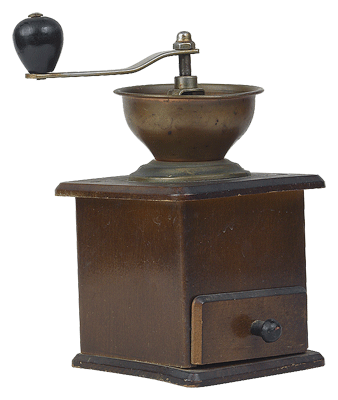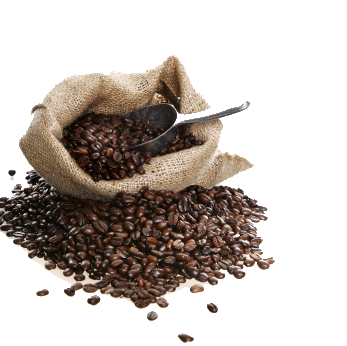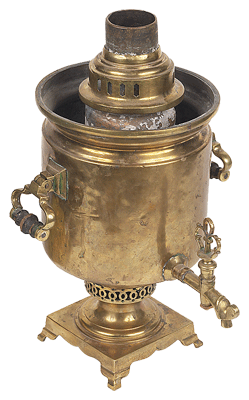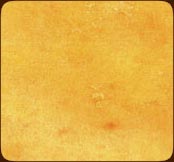
The Research
Type into Search: "Ganoderma or Ganoderma lucidum" in the search field for hundreds of Studies!
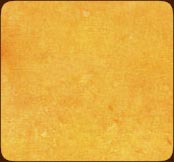

Asia's Secret
For thousands of years, Ganoderma Lucidum, a kind of medicinal fungi, has been highly regarded by the Chinese as the “Miraculous King of Herbs.”
Ganoderma
Said to be able to improve the body’s healing ability, maintain a healthy body and promote longevity.
Ganoderma has been shrouded with mysterious veils for more than 1,000 years.
4HISTORY OF COFFEE
- TODAY
Today, coffee is a giant global industry employing more than 20 million people. This commodity ranks second only to petroleum in terms of dollars traded worldwide. With over 400 billion cups consumed every year, coffee is the world's most popular beverage. If you can imagine, in Brazil alone, over 5 million people are employed in the cultivation and harvesting of over 3 billion coffee plants.
Sales of premium specialty coffees in the United States have reached the multi billion dollar level, and are increasing significantly on an annual basis.
- Coffee History & Cultivation (800 BC)
In the West, coffee is three hundred years old, but in the East dates go back to 800 B.C.
For us Westerners coffee is three hundred years old, but in the East it was widespread as a beverage, in every level of society, since earlier times. The first definite dates go back to 800 b.C.; but already Homer, and many Arabian legends, tell the story of a mysterious black and bitter beverage with powers of stimulation. In the year 1000 about, Avicenna was administering coffee as a medacine. And there is a strange story, dating from 1400, of a Yemeni shepherd who, having observed some goats cropping reddish berries from a bush, and subsequently becoming restless and excited, reported the incident to a monk. The latter boiled the berries, and then distilled a bitter beverage, rich in strength, and capable of dispersing sleep and weariness.
However the discovery occurred, the fact remains that the coffee plant was born in Africa in an Ethiopian region (Kaffa). From there it spread to Yemen, Arabia and Egypt, where it developed enormously, and entered popular daily life.
- Qahwa -- 1100
The coffee first trees are cultivated on the Arabian peninsula. Coffee is first roasted and boiled by Arabs making "qahwa" --- a beverage made from plants.
- Coffee 1475
The worlds first coffee shop opens in Constantinople. It is followed by the establishment of two coffee houses in 1554.
- Europe -- 1500's
By the late 1500’s the first traders were selling coffee in Europe, thus introducing the new beverage into Western life and custom. Most of the coffee exported to European markets came from the ports of Alexandria and Smyrna. But the increasing needs of a growing market, improved botanical knowledge of the coffee plant, and high taxes imposed at the ports of shipment, led dealers and scientists to try transplanting coffee in other countries. The Dutch in their overseas colonies (Batavia and Java), the French in 1723 in Martinique, and later on in the Antilles, and then the English, Spanish and Portuguese, started to invade the tropical belts of Asia and America.
- Europe -- 1600
Coffee enters Europe through the port of Venice. The first coffeehouse opens in Italy in 1654.
- Captain John Smith -- 1607
Coffee is introduced to the New World by Captain John Smith, founder of Virginia at Jamestown... Some Canadian historians claim it arrived in previously settled Canada.
- Coffee Houses - England -- 1652
The first coffeehouse opens in England. Coffeehouses are called "penny universities" (a penny is charged for admission and a cup of coffee). Edward Lloyd's coffeehouse opens in 1688. It eventually becomes Lloyd's of London, the world's best known insurance company. The word “TIPS” is coined in an English coffee house: A sign reading “To Insure Prompt Service” (TIPS) was placed by a cup. Those desiring prompt service and better seating threw a coin into a tin.
- France -- 1672
The opening of the first Parisian cafe dedicated to serving coffee. In 1713, King Louis XIV is presented with a coffee tree. It is believed that sugar was first used as an additive in his court.
- Vienna -- 1683
The first coffeehouse opens in Vienna. The Turks, defeated in battle, leave sacks of coffee behind.
- Dutch -- 1690
The Dutch become the first to transport and cultivate coffee commercially. Coffee is smuggled out of the Arab port of Mocha and transported to Ceylon and East Indies for cultivation.
- America's -- 1700
In 1723, coffee plants are introduced in the Americas for cultivation. Coffee found its way to the Americas by means of a French infantry captain; Gabriel de Clieu, a French naval officer, who nurtured one small plant on its long journey across the Atlantic to Martinique. By 1777, 1920 million coffee plants are cultivated on the island. This one plant, transplanted to the Caribbean Island of Martinique, became the predecessor of over 19 million trees on the island within 50 years. It was from this humble beginning that the coffee plant found its way to the rest of the tropical regions of South and Central America.
Coffee was declared the national drink of the then colonized United States by the Continental Congress, in protest of the excessive tax on tea levied by the British crown.
- Berline -- 1721
The first coffeehouse opens in Berlin.
- North Brazil -- 1727
The Brazilian coffee industry gets its start from seedlings smuggled out of Paris. In 1727 coffee growing was started in North Brazil, but the poor climatic conditions gradually shifted the crops, first to Rio de Janeiro and finally (1800-1850) to the States of San Paolo and Minas, where coffee found its ideal environment. Coffee growing began to develop here, until it became the most important economic resource of Brazil.
It was precisely in the period 1740-1805 that coffee growing reached its top spread, in Center and South America.
Although coffee was born in Africa, plantations and home consumption are comparatively recent introductions. Actually it was Europeans who introduced it again, into their colonies, where, thanks to favourable land and climatic conditions, it was able to thrive.
- Rome-Coffee Houses -- 1750
One of Europe's first coffeehouses, Cafe Greco, opens in Rome. By 1763, Venice has over 2,000 coffee shops.
- Expresso Machines -- 1822
The prototype of the first crude espresso machine is created in France. The Italians perfected this wonderful machine and were the first to manufacture it. Espresso has become such an integral part of Italian life and culture, that there are presently over 200,000 espresso bars in Italy.
- Natural Gas & Hot Air -- 1885
A process of using natural gas and hot air becomes the most popular method of roasting coffee.
- James Mason - Percolators -- 1865
James Mason invented the coffee percolator on December 26, 1865.
- Germany -- 1900
Kaffeeklatsch, afternoon coffee, becomes popular in Germany.
- Instant Coffee -- 1901
In 1901, just-add-hot water "instant" coffee was invented by Japanese American chemist Satori Kato of Chicago. In 1906, English chemist George Constant Washington, invented the first mass-produced instant coffee. Washington was living in Guatemala and at the time when he observed dried coffee on his coffee carafe, after experimenting he created "Red E Coffee" - the brand name for his instant coffee first marketed in 1909. In 1938, Nescafe or freeze-dried coffee was invented.
- Italy - Commercial Espresso Machine -- 1905
The first commercial espresso machine is manufactured in Italy.
- Drip Coffeemaker - Coffee Filters -- 1908
The invention of the worlds first drip coffeemaker. Melitta Bentz makes a filter using blotting paper.
Melitta Bentz was a housewife from Dresden, Germany, who invented the first coffee filter. She was looking for a way to brew the perfect cup of coffee with none of the bitterness caused by overbrewing. Melitta Bentz decided to invent a way to make a filtered coffee, pouring boiling water over ground coffee and having the liquid be filtered, removing any grinds. Melitta Bentz experimented with different materials, until she found that her son's blotter paper used for school worked best. She cut a round piece of blotting paper and put it in a metal cup.
On June 20th, 1908, the coffee filter and filter paper were patented. On December 15th, 1908, Melitta Bentz and her husband Hugo started the Melitta Bentz Company. The next year they sold 1200 coffee filters at the Leipziger fair in Germany. The Mellitta Bentz Company also patented the filter bag in 1937 and vacuumpacking in 1962.
- Other Trivia -- 1926
On May 11, 1926, "Maxwell House Good to the last drop" was trademark registered.
- Automatic Espresso Machine -- 1933
In 1933, Dr. Ernest Illy invented the first automatic espresso machine. However, the modern-day espresso machine was created by Italian Achilles Gaggia in 1946. Gaggia invented a high pressure espresso machine by using a spring powered lever system. The first pump driven espresso machine was produced in 1960 by the Faema company.
- Nescafé -- 1938
Nescafé instant coffee is invented by the Nestlé company as it assists the Brazilian government in solving its coffee surplus problem.
- Espresso - Perfecto -- 1945
Achilles Gaggia perfects the espresso machine with a piston that creates a high pressure extraction to produce a thick layer of crema.
- Canadian Espresso -- 1991
Caffè Carissimi Canada, a network of espresso service providers is formed in Canada, modeled after a visit to Franco Carissimi (roaster and equipment manufacturer) in Bergamo Italy. It becomes the fastest growing network of private and independant super automatic machines providers in Canada.
400 Billion Cups -- 1995
Coffee is the worlds most popular beverage. More than 400 billion cups are consumed each year. It is a world commodity that is second only to oil.
Free Report: Caffeine

TAKE THE COURSE
Discover what heavy hitters actually do so YOU can start MAKING MONEY with your home business the way they do. Click...

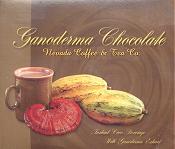
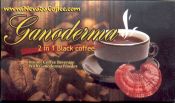
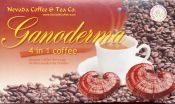
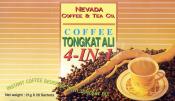



Web Master: Design Carte
This page was last updated: July 7, 2008
LCR Gano Brand (ID#: 12081)
LARSON CENTURY RANCH
P. O. Box 1982
Clarkston, WA 99403
Telephone: 509-758-5445
FAX: 509-758-5701
E-Mail: Sales@LarsonCenturyRanch.com

